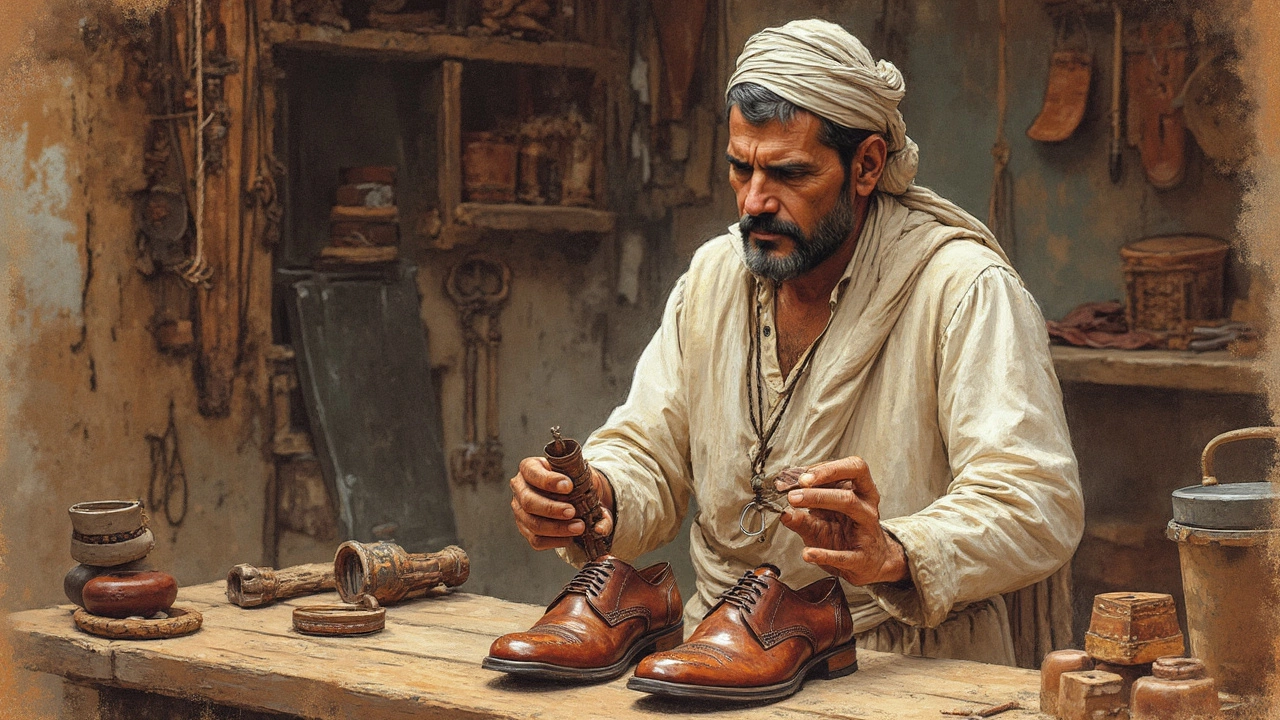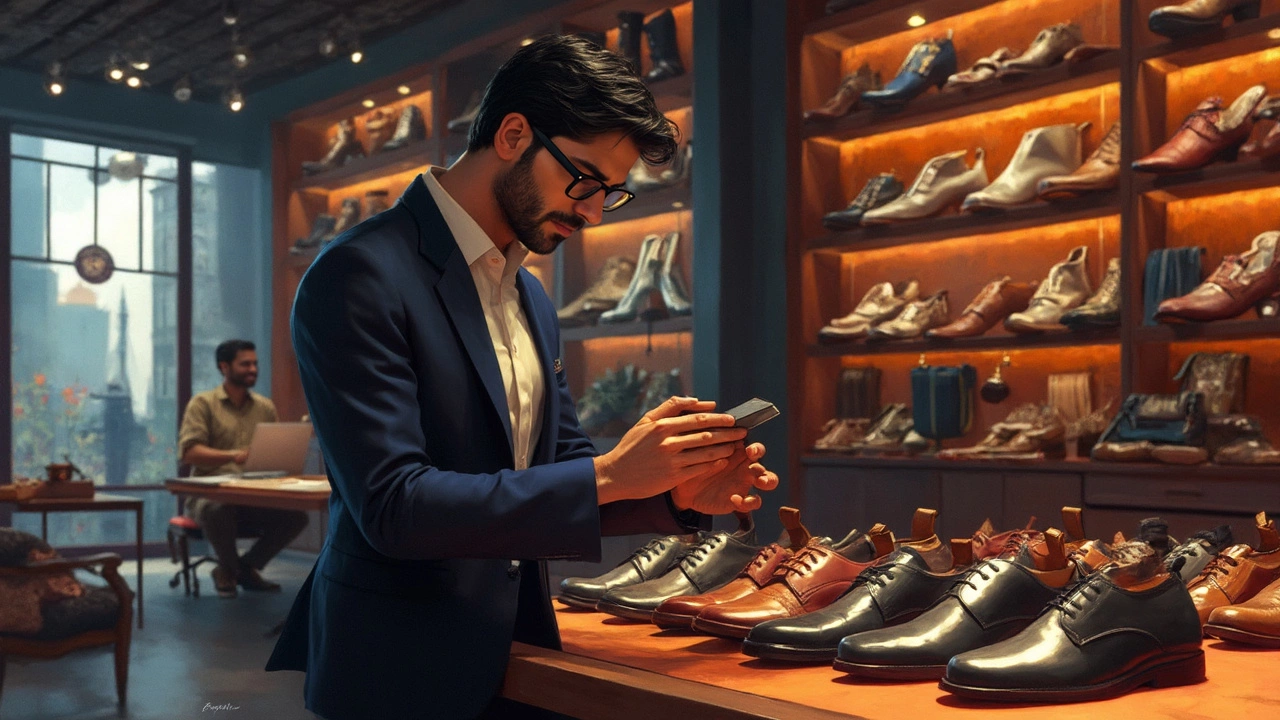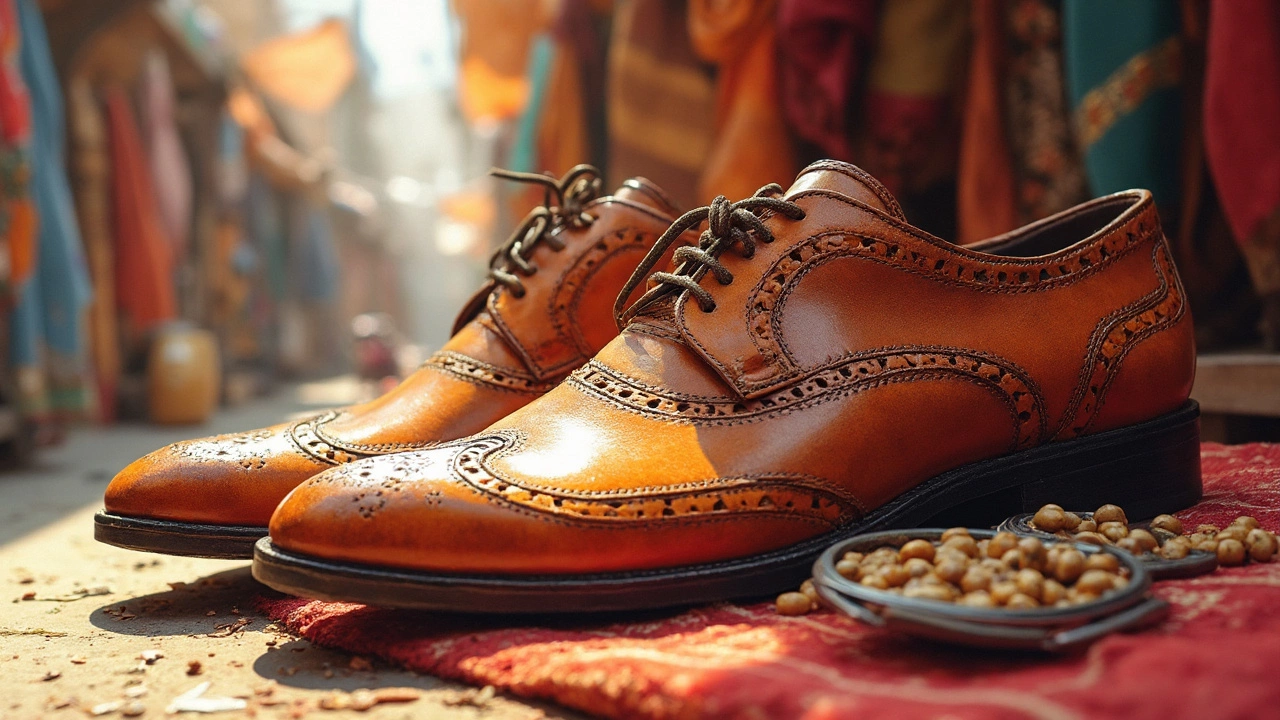Buying a pair of leather shoes is an investment—not just in style but in durability. But here's the catch: how can you be sure you're getting the real deal? Fake leather might look convincing at first glance, but there are telltale signs that can help you spot genuine leather.
First off, use your nose. Real leather has a distinct, natural smell that's hard to replicate. It's earthy and rich, while fake leather often smells like plastic or chemicals. So, don't be shy—give your potential new shoes a sniff!
Next up, feel the texture. Genuine leather generally has an uneven, slightly grainy texture. It's not factory-perfect, and that's what makes it unique. Fake leather, on the other hand, feels more uniform and often too smooth. It might look shiny on the surface but lacks that tactile appeal.
- The Smell Test
- Texture and Feel
- Inspecting the Edges
- Checking for Natural Marks
- Price and Quality Correlation
The Smell Test
Believe it or not, your nose is one of the best tools you have when it comes to identifying real leather shoes. Sniffing out the genuine article starts with understanding the unique aroma of natural leather, which comes from the complex tanning process that gives leather its characteristic scent.
So, how do you know if what you're smelling is real leather? Well, genuine leather gives off a distinct, earthy smell that many describe as pleasing and organic. It's far removed from the synthetic or chemical smell that fake leather often has, due to the artificial materials used in its production.
The Origins of the Leather Scent
The smell comes from treating the leather hides through various tanning methods, using either plant-based (vegetable tanning) or chemical agents (chrome tanning). Responsible tanneries produce a smell that's both comfortable and a sign of quality, whereas lesser methods might make the leather scent overwhelming or artificial.
- Vegetable-tanned leather: This process uses natural tannins found in bark, wood, or other plant parts, leading to a subtle and pleasant scent.
- Chrome-tanned leather: Quicker and more common, this method can sometimes result in a sharper scent due to the chemicals involved.
Feeling a bit self-conscious about taking a whiff in a store? Don’t worry about it! Most shoe sellers know that customers often perform a smell test. It's a practical strategy for confirming the authenticity of the shoes and a legit way to make sure you’re getting your money’s worth.
Texture and Feel
When you're trying to figure out if those leather shoes are the real deal, feeling the texture is a great move. Genuine leather isn't uniformly smooth. Instead, it has an uneven, grainy surface that's unique and natural. This texture gives real leather shoes character and individuality.
Here's a little trick: touch the surface with your fingertips. Genuine leather will have small imperfections in its texture, like tiny pores or patterns. This is because it comes from animal hides. On the flip side, fake leather often feels too smooth and almost synthetic, which can be a dead giveaway. Don't be afraid to press into the material—real leather usually has some give and feels softer to the touch.
Heat and Moisture Test
Another sign of quality is how the leather reacts to heat and moisture. Real leather absorbs moisture and warmth from your hands, becoming slightly darker momentarily. It doesn't dry out right away. Fake leather tends to repel water, leaving droplets on the surface rather than soaking in.
If you're at home and trying to confirm the authenticity, carefully place a drop of water on the leather. See what happens. On authentic leather, the water should be absorbed fairly quickly, darkening the area temporarily. Fake leather will likely pool up or run off.
Flexibility and Durability
Lastly, consider the shoe's flexibility. Genuine leather is sturdy but also pliable. When bending the shoe or pressing down, it ought to bend at natural points without cracking or showing stress marks. Fake leather can crack or wrinkle in a very obvious way when you try to bend it, which is something to watch out for.
Knowing these little clues can make a big difference when you're on the hunt for genuine leather shoes. It’ll help ensure you're investing in something worth wearing and built to last.

Inspecting the Edges
When checking shoe quality, the edges tell you a lot. Real leather often has unfinished, rougher edges. This is because leather is a natural product, and its edges won't look too perfect. In contrast, fake leather or low-quality materials are usually smooth and plastic-like at the edges.
Genuine leather sometimes reveals layers of fibers at the cut edges, especially if it’s a thicker shoe or a boot. These fibers give away its natural origins. Fake leather, however, often has a fabric back or looks more consistent from every angle.
Simple Tests to Try
- Bend the Edges: Bend the shoe edges gently. Real leather will wrinkle up slightly and return to its original state, whereas fake leather might just bend or even crack.
- Look for Color Variations: Real leather edges can show color variations. Natural materials absorb dye differently, causing slight color changes. Fake leather tends to have a uniform color.
Industry Insight
Shoe industries often use advanced machines to finish leather edges. However, top brands still allow some natural imperfections to highlight authenticity. As many shoe veterans say, the beauty is in these natural quirks!
Checking for Natural Marks
It's time to get up close and personal with those leather shoes. Real leather tells a story through its natural marks and imperfections, and these are worth looking out for.
Real leather shoes often bear unique markings that result from the animal's life. These can include small scars, wrinkles, or even bug bites. Think of them as nature's way of stamping authenticity onto your shoes. These little imperfections are usually not uniform, setting them apart from the consistent patterns found in fake leather, which is typically manufactured to look flawless.
If you're buying shoes in person, try this: inspect the leather under good lighting. You might notice variations in tone or minor blemishes, which are good signs of genuine leather.
Natural Grain Patterns
Unlike synthetic options, authentic leather shows a natural grain pattern. While examining the shoes, an inconsistent grain pattern with distinctive texture differences is a clue that you’re holding real leather. Look for a varied grain, especially in areas like the instep and tongue, where natural leather tends to show the most variation.
Common Signs of Real Leather
- Small scars or scratches: These are common in real leather, offering a piece of the animal’s history.
- Wrinkles and folds: Genuine leather might appear stretched or creased, a sign that it was once part of a living, moving creature.
- Texture variations: The feel of the leather should change from one section of the shoe to another, demonstrating its natural origin.
Spotting these natural marks can make a huge difference in ensuring you get real leather shoes. Pay attention, and you'll become a pro at distinguishing genuine quality from the imitators.

Price and Quality Correlation
When it comes to real leather shoes, the old adage 'you get what you pay for' often rings true. Real leather is a premium material that's durable and long-lasting, so it usually comes with a heftier price tag. If a pair of shoes is being offered at a suspiciously low price, chances are, they're probably not made from genuine leather.
Let's talk numbers. On average, genuine leather shoes can range from USD 100 upwards, whereas synthetic alternatives might set you back just USD 30 to USD 50. It's pretty clear there's a financial leap when investing in real leather, but this price difference is reflective of quality, durability, and craftsmanship.
What Are You Really Paying For?
With genuine leather shoes, you're investing in materials treated to ensure they last longer, offering better comfort and breathability. While the upfront cost is higher, real leather shoes often outlive multiple pairs of fake ones, which can actually save you money in the long term.
- Durability: Genuine leather tends to be more robust and can last for years with the right care.
- Breathability: Unlike synthetic materials, real leather allows feet to breathe, reducing odor and discomfort.
- Aesthetic Appeal: Real leather usually ages beautifully and develops a unique patina over time.
If you're scouring the market for a good deal but still want quality, look out for sales from reputable brands. They often offer discounts while ensuring you don't compromise on the authenticity of the leather.

